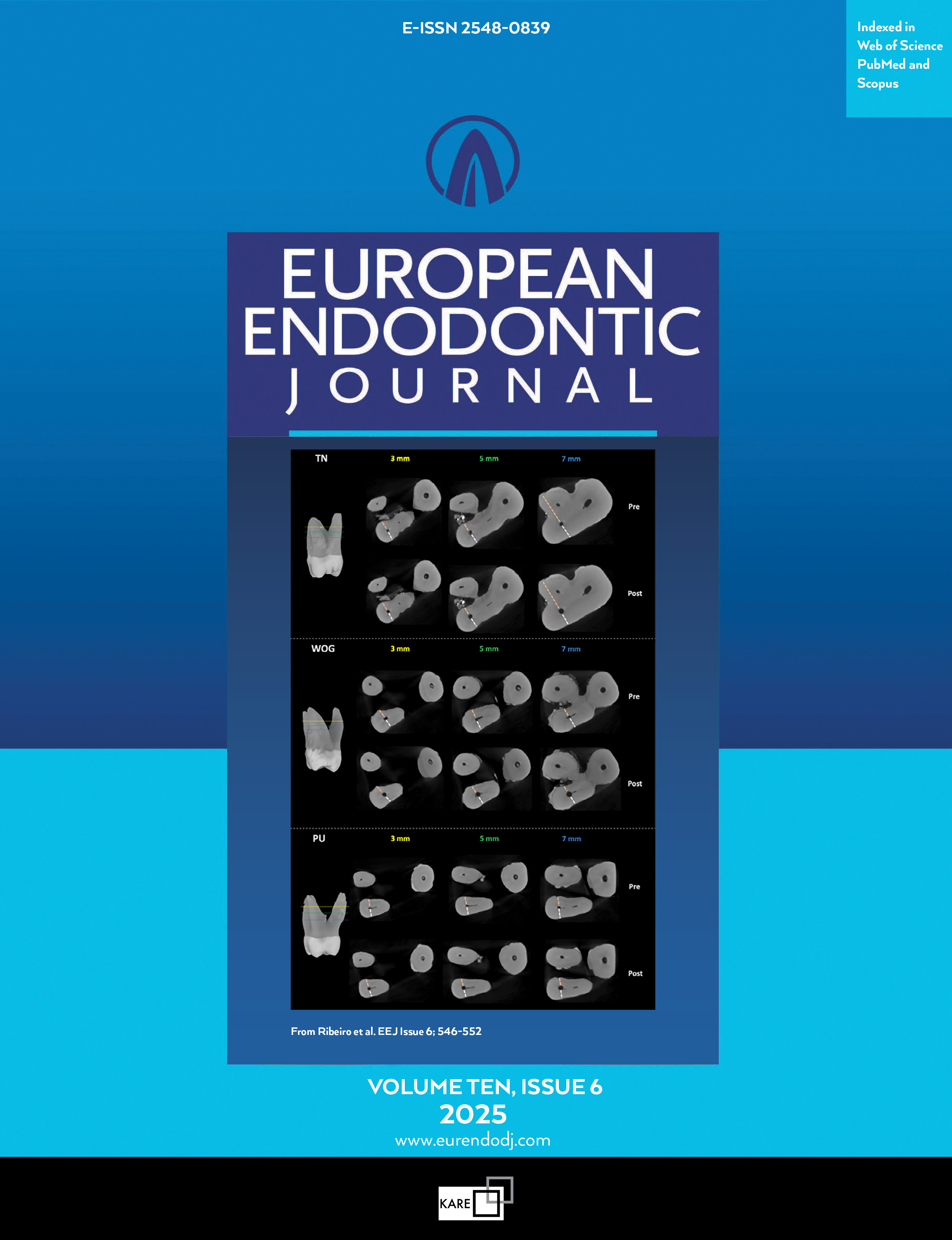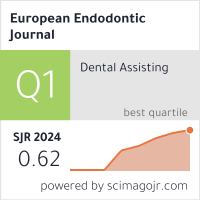Metrics
2024 IMPACT FACTOR
5 year Impact Factor
Eigenfactor Score
2024 CiteScore
Journal Citation Reports
(Clarivate 2025, JIF Rank)
Effect of Gravity on Periapical Extrusion of Irrigating Solution With Different Irrigation Protocols in Immature Anterior Teeth
Radha Sharma, Vijay Kumar, Ajay Logani, Amrita Chawla, Sidhartha Sharma, Bhawna KoliDivision of Conservative Dentistry and Endodontics Centre, Dental Education and Research All India Institute of Medical Sciences New Delhi, IndiaObjective: Periapical extrusion is frequently observed during endodontic therapy. It can lead to acute injury of periapical tissues, resulting in interappointment pain or swelling. The effect is pronounced in teeth with immature teeth which are more susceptible to the extrusion of irrigant. The aim of this study was to evaluate the effect of gravity on apical extrusion of irrigating solution with different irrigation protocols in immature anterior teeth.
Methods: An extracted maxillary central incisor was modified to simulate an open apex with an apical diameter of 1.3 mm and parallel canal walls. The tooth was subjected to a cone-beam computed tomographic scan, and the image data set was utilized to prepare 30 resin tooth models with a 3D printer. These resin teeth were used to form an open-ended Myers and Montgomery extrusion models. These were then randomly divided into two groups to simulate their orientation in the jaw during endodontic therapy, i.e., group I (maxillary arch, n=15) models fixed at 45° inclined plane and group II (mandibular arch, n=15) models placed at a plane parallel to the floor. Five models from each group (n=5) were tested by three different irrigation protocols: positive pressure (PP) Irrigation, passive ultrasonic irrigation (PUI), and negative pressure (NP) irrigation. The extruded irrigating solution was collected in glass vials, and the volume was measured.
Results: The volume of extruded irrigating solution in groups I and II was compared using MannWhitney U-test. The median values for PP, PUI, and NP irrigation protocols were 0.6, 1, and 0 ml and 10, 10, and 0.5 ml for groups I and II, respectively. PP and PUI protocols were associated with significantly less extrusion in group I when compared to group II (P=0.004). There was no statistically significant difference in the volume of irrigating solution extruded in groups I and II (P=0.007) for NP irrigation protocol.
Conclusion: Gravitation force has an influence on periapical extrusion of irrigant in immature permanent teeth irrespective of the irrigant system used. NP performed better when compared to PP or PUI irrigation protocol irrespective of the tooth orientation.
Keywords: Gravity, immature teeth, irrigant extrusion, negative pressure irrigation, passive ultra sonic irrigation
Manuscript Language: English
(881 downloaded)



